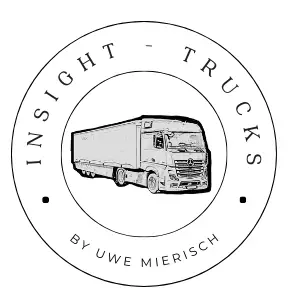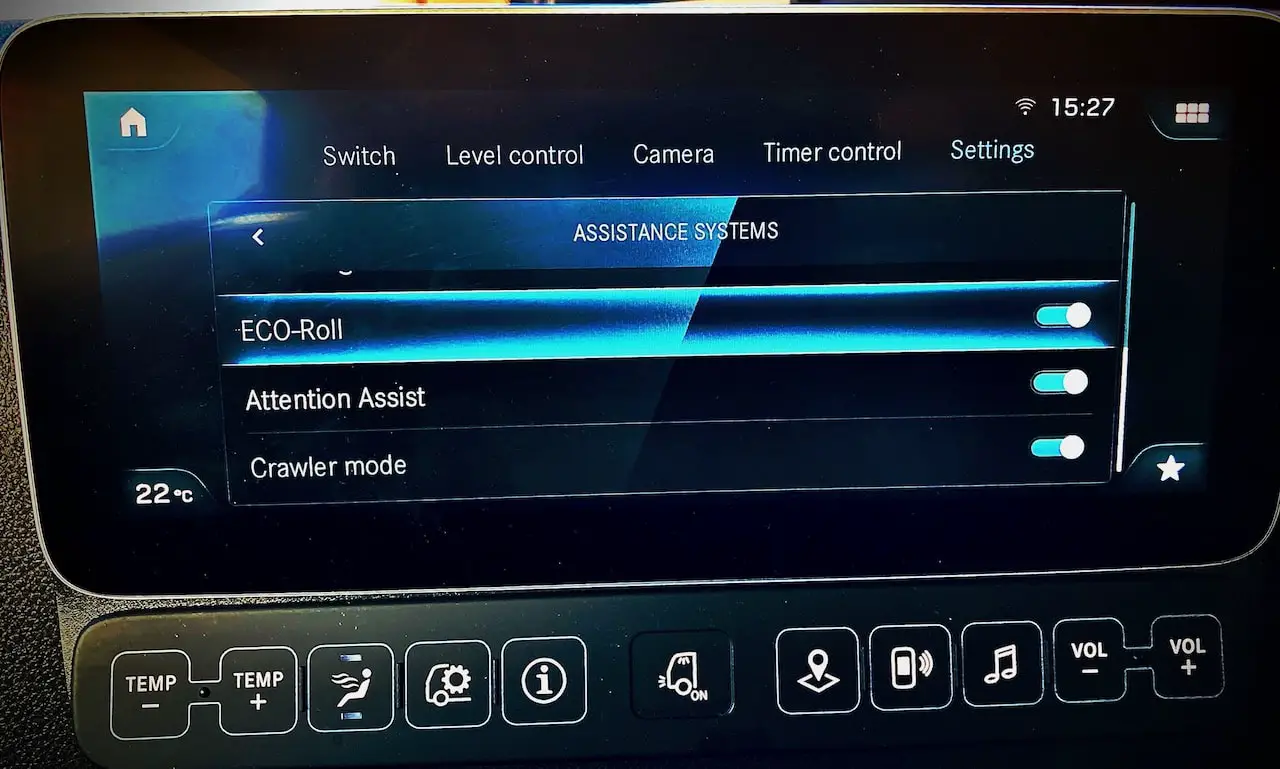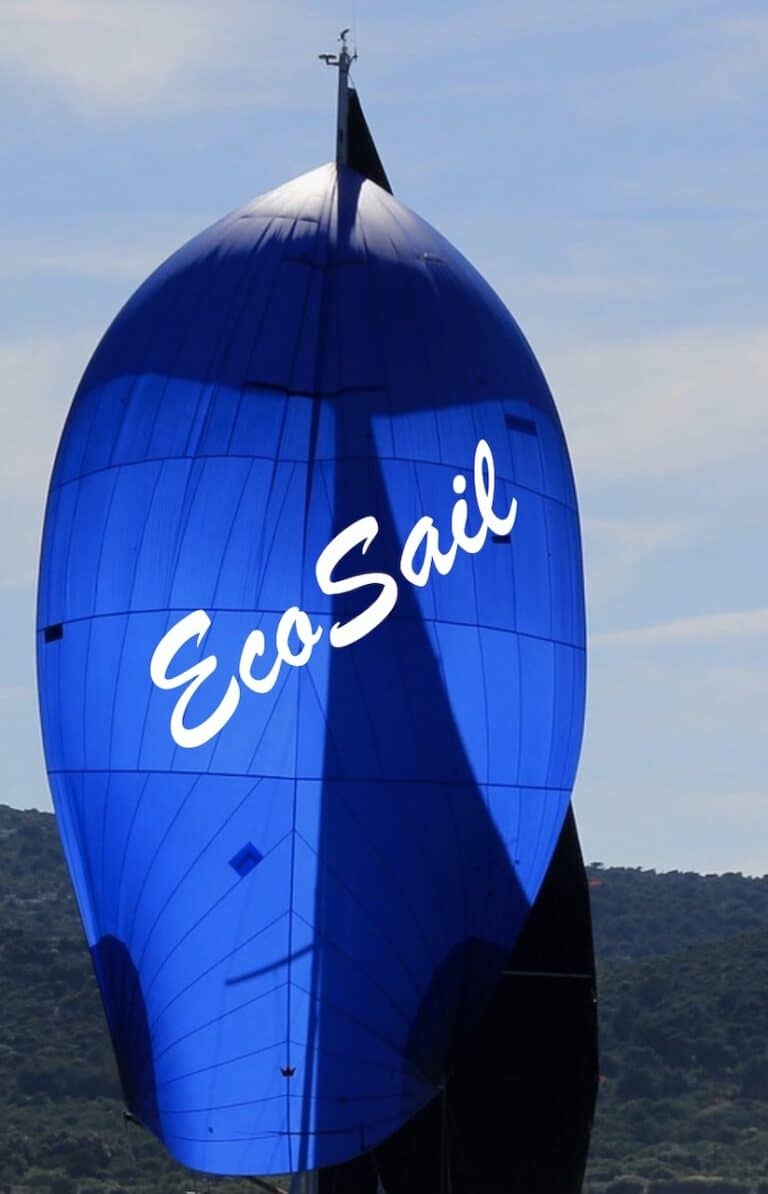EcoRoll – Unraveling the mysterious freewheel function
The EcoRoll mode of commercial vehicles is a software function that converts excess vehicle energy into work to overcome driving resistance.
A truck with a freewheeling function? What’s the point?
And besides, it’s all mumbo jumbo, pointless, gimmicky, completely useless, it won’t work ….., so …… I’ve expressed a few prejudices.
Do you know how the EcoRoll mode works in detail? When and why it saves fuel?
I’ll be honest. It took me quite a while to understand it all, even though it’s my job to know these things!
You can spare the effort of finding it out yourself.
After reading this article, you will know when and why EcoRoll saves fuel.
But you will also read under which circumstances EcoRoll offers no advantage. EcoRoll does not always save fuel in every situation.
You can read even more about this topic in the next article. There I will explain which factors influence the savings effect of EcoRoll.
If you understand the background of EcoRoll, you can better assess and use this function.
You can then comprehend, why driver assistance systems sometimes activate EcoRoll and sometimes do not.
Everything in this article is based on an average European 4×2 tractor-trailer combination. If you are interested in different configurations, let me know, and I will try to help.
What is a freewheel?
A freewheel transmits torque in one direction only. From the drive (motor) –> to the wheels.
If the speed of the wheels exceeds the speed of the drive, the freewheel automatically disconnects the power transmission.
The freewheel prevents the drive from being pushed by the wheels.
You know the freewheel from a bicycle.
If you stop with your feet on the pedals while riding, the freewheel immediately interrupts the power transmission between the rear wheel and the chain.
You can rest your feet comfortably on the pedals, and enjoy how the bike rolls on without braking. On some models you can hear the freewheel working, it produces a whirring sound.
Without freewheeling, the bike would stop immediately if you didn’t move your legs. I’m just saying:
Full stop – immediate loss of kinetic energy!
If you want the ride to continue, you’d have to keep pedaling.
EcoRoll is a freewheel and provides the same effect as the freewheel on a bicycle, but it is designed quite differently. It is not a mechanical component, but a software program in the vehicle electronics.
…., and it’s not you that doesn’t have to pedal, it’s the engine.
What is the EcoRoll mode?
The EcoRoll mode is a software function for automatically shifted transmissions.
If no drive torque is requested via the accelerator pedal or cruise control and no brake is applied, the EcoRoll mode automatically engages transmission idling.
The power transfer between the engine and drive axle is disconnected during the EcoRoll phase, and the engine runs at idle.
Letting the engine idle is supposed to reduce fuel consumption?
Isn’t it more economical to let the wheels push the engine with the gear engaged, and the diesel injection shut off?
That’s how it worked for many years before EcoRoll was invented.
By now, every truck manufacturer offers an EcoRoll function. So there must be something to it.
So let’s take a closer look at this topic.
Why does the EcoRoll mode save diesel?
In EcoRoll mode, the vehicle’s excess kinetic or position energy is used to overcome driving resistance instead of being converted into heat by the engine.
Using positional or kinetic energy to generate mechanical work is significantly more efficient than propulsion by the internal combustion engine.
In the article: “Do you want to know why less work saves fuel?”, and “Save fuel with anticipatory driving—How to do it.”, I am going to explain it in detail.
(At the moment only available as a German language version. The translation is still to come. Sign up for the information on the release of these articles.)
The EcoRoll function uses this circumstance to save fuel.
You can recognize excess energy by the fact, that you step off the throttle. This is always a sign of too much position or kinetic energy in the vehicle when driving.
EcoRoll disconnects the power transmission to the engine as soon as there is an excess position or kinetic energy in the vehicle. This excess energy is thus automatically converted into motion (mechanical work) with very good efficiency.
With EcoRoll, the vehicle rolls a longer distance without propulsion. Less propulsion by the engine saves diesel, and thus the consumption advantage is achieved.
How big is the consumption advantage of EcoRoll?
The fuel consumption benefit corresponds to the fuel consumption that would occur on the EcoRoll distance, if the EcoRoll function would not be used, reduced by the idling consumption of the engine during the EcoRoll time.
I will explain this answer in the next sections with the help of a diagram.
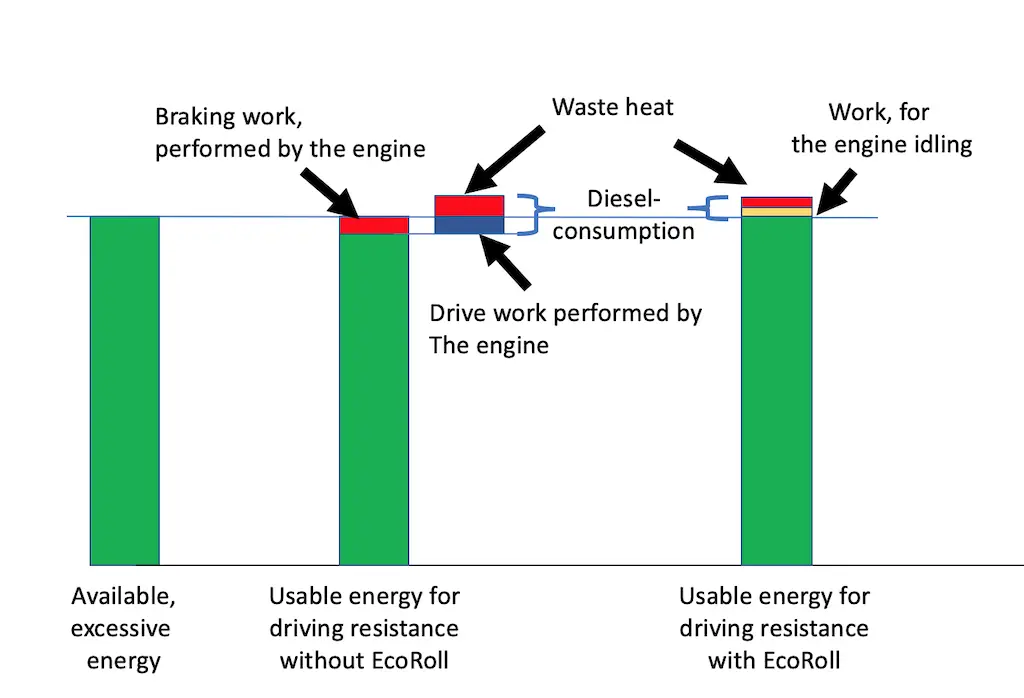
The left column shows the full energy potential.
The left column shows the amount of energy that can be used at maximum.
This energy is released when you drive down a slope or when you have to reduce the driving speed.
It is excess position energy when going downhill or excess kinetic energy when reducing speed.
Ideally, we would like to use all of this energy for driving, simply letting the inertia of the vehicle do the work.
The middle column shows driving without EcoRoll.
In this situation, the engine, through its retarding effect, burns up part of the excess energy and converts it to waste heat (engine braking work shown in red).
The remaining part of the energy becomes driving resistance work (green bar) using the vehicle’s inertia.
As soon as the excess energy is used up, the engine has to provide propulsion again.
Since the rolling distance is shortened due to the engine braking effect, the engine has to return to work sooner and provide the work that it previously braked away.
Due to its poor efficiency, it consumes significantly more energy than it delivers on the road to overcoming driving resistance.
The blue and red bars together account for the additional diesel consumption. The driving resistance work is shown in blue and the waste heat is in red.
In the column on the right, you can see the drive with EcoRoll.
When EcoRoll is activated, no engine braking occurs.
The excess energy is completely converted into driving resistance work. This means that no power has to be supplied by the engine. Not only does this eliminate energy consumption, but there is also no waste heat due to the poor engine efficiency.
However, EcoRoll does not switch off the engine, but lets it run at idle. The idling consumption (yellow + red bar) occurs over the entire rolling time and thus reduces the savings effect.
The yellow bar represents the work needed to overcome the friction in the engine and to drive the auxiliaries. Here also waste heat occurs.
Do you recognize the different sizes of the brackets between the middle and the right column? This difference represents the fuel consumption saved by using EcoRoll.
Of course, I can’t give you a concrete value for the savings at this point. There are far too many influencing factors at play for that.
But I would like to venture a very rough estimate.
If I calculate the consumption advantage for some constellations, I arrive at orders of magnitude of around 20 cubic centimeters of diesel savings per single rolling cycle. (Attention, the scatter range is huge! I find 0 up to three digits figures.)
If we had a route with 100 rolling phases per 100 km, fuel savings of 2 l/100 km would add up. Now, you won’t have EcoRoll capable coasting on every kilometer. Still, on the other hand, there will also be coasting phases where EcoRoll will save significantly more than 20 cubic centimeters of diesel.
The real savings fluctuate in a very large range. Take the value as a very rough approximation for the order of magnitude of possible savings.
I will go into detail about how the different influencing factors affect the fuel-saving potential. I can say in advance that the route’s altitude profile has a decisive influence.
In which driving situations does the EcoRoll mode save fuel?
To understand the following explanation, it is beneficial to know the energy conversion processes during the ride.
The basis is always a predictive driving style!
I still have to translate the corresponding article. (Sign up for the information on the release of these articles.)
I see two basic driving situations in which EcoRoll has a slightly different effect.
- The vehicle slows down during the EcoRoll phase.
- The vehicle speeds up during the EcoRoll phase.
Let’s look at them one by one.
1. Rolling out onto obstacles or coming to a standstill.
To better explain this, I use the road condition that isolates the first effect. This is a flat road.
It is clear that this circumstance also occurs in real driving on sloping roads. In this case, both effects overlap.
The reduction in speed is caused either by a traffic obstacle (e.g., a speed limit, a bend, a bump, crossroads, or other things of this nature) or you reached your destination.
When driving with foresight, you, or your cruise control, will take off the throttle in time for the vehicle to reach the target speed at exactly the right spot.
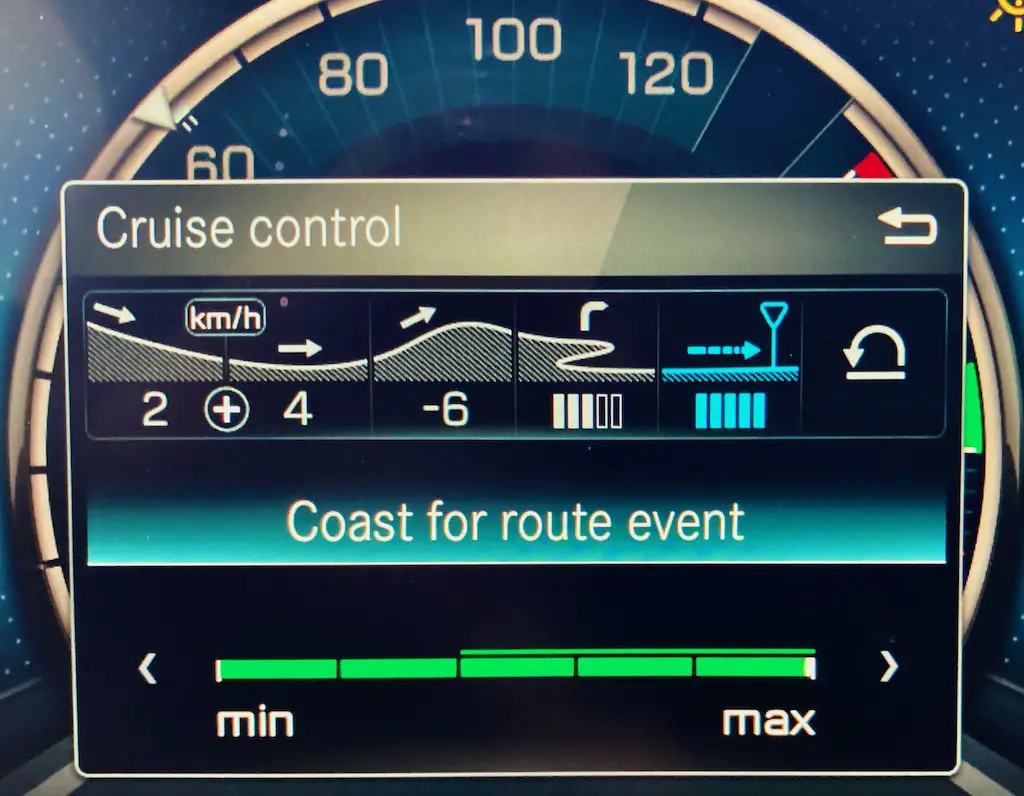
When EcoRoll mode is activated, the transmission idles the moment you take your foot off the throttle. The vehicle rolls in freewheel mode.
Since the location, where the vehicle must have reached the target speed, is fixed, this must be taken into account in the rolling phase.
Therefore, the point at which the engine stops providing propulsion is the crucial moment.
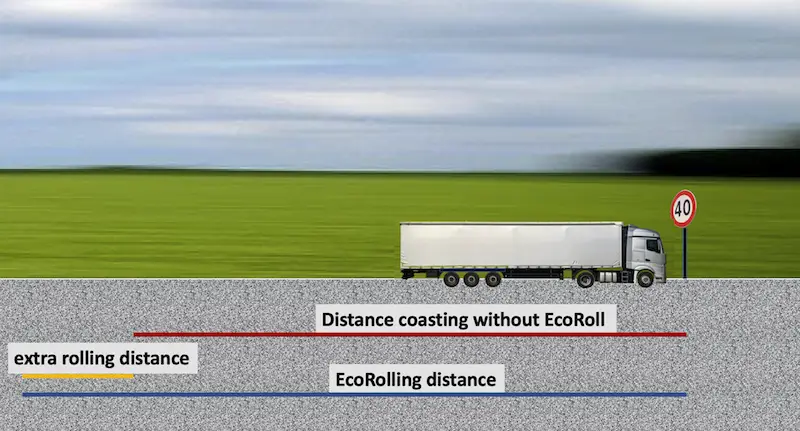
The additional rolling distance that EcoRoll enables must already be realized at the beginning of the rolling phase.
With EcoRoll you have to let off the throttle earlier by exactly the length of the additional rolling distance.
When I write “you”, please also understand the predictive cruise control of your truck, to which you can delegate this task!
I want to be realistic. In manual driving mode, you probably won’t be able to fully exploit the potential.
You would need to:
- Know how large the driving resistances are,
- calculate how much energy is left,
- convert this into the additional distance,
- measure this distance,
- identify the point where the foot must come off the throttle.
No human being can get that exactly right. The computer can do it.
This is the reason, why some OEMs offer EcoRoll only in combination with predictive cruise control.
The accuracy of performing this exercise shows the quality of predictive cruise control.
If you have read all of it, I guess you will be able to experience differences when you drive different trucks.
A good driver can also develop a feeling for when to take the throttle off with the EcoRoll function switched on. Especially if he knows the route and has trained for it. (I explain it in detail in the predictive driving article.)
To make the most of the potential, you should avoid having to brake at the end of the roll phase. This braking is lost in rolling distance.
Because it is usually not possible to hit exactly the right spot, the best alternative is to take your foot off the accelerator a little too early. When you reach the target speed, continue to drive at this speed constantly, don’t accelerate. This only loses a few seconds of driving time, but saves diesel.
2. Driving on undulating topography.
In this driving situation, you are driving in hilly terrain. The road is undulating up and down.
The speed here is approximately the same at the beginning and at the end of every rolling phase. In the first part of the rolling phase, a speed surplus builds up, which is converted into an additional rolling distance in the second rolling phase.
For this to work, you must have a speed reserve.
This means that the speed at the beginning of the rolling phase must be well below the allowed maximum speed limit.
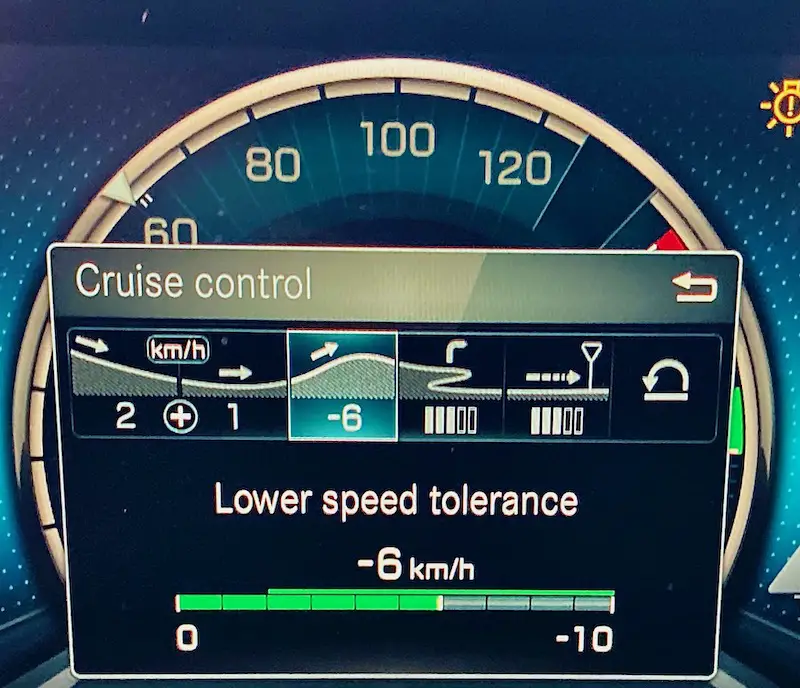
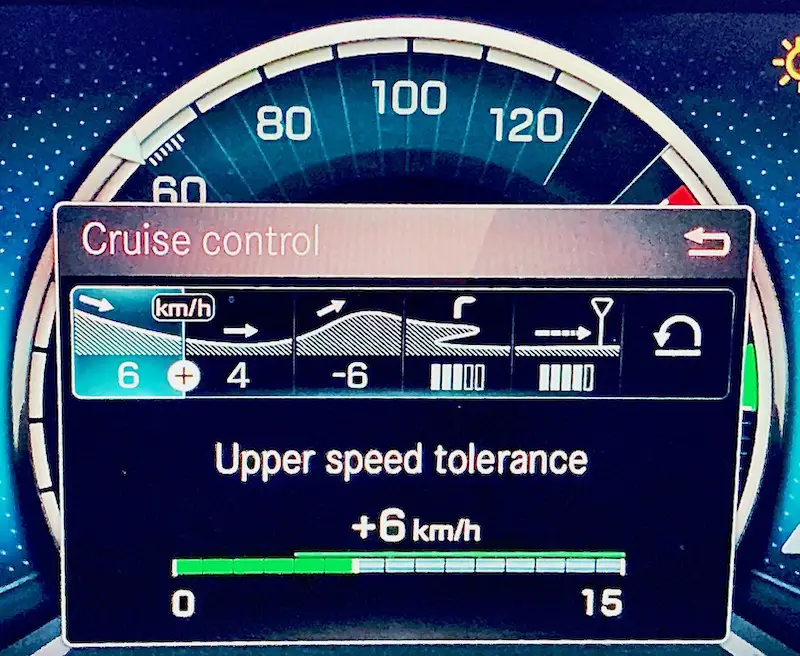
With predictive cruise controls, the lower and upper values of the adjustable speed tolerance are decisive.
Without cruise control, you must manually slow down to enter the roll phase.
A good cruise control system will roll into the downhill at a speed just low enough not to exceed the upper tolerance limit when building up speed downhill.
In this driving situation, the additional rolling distance is at the end of the rolling phase.
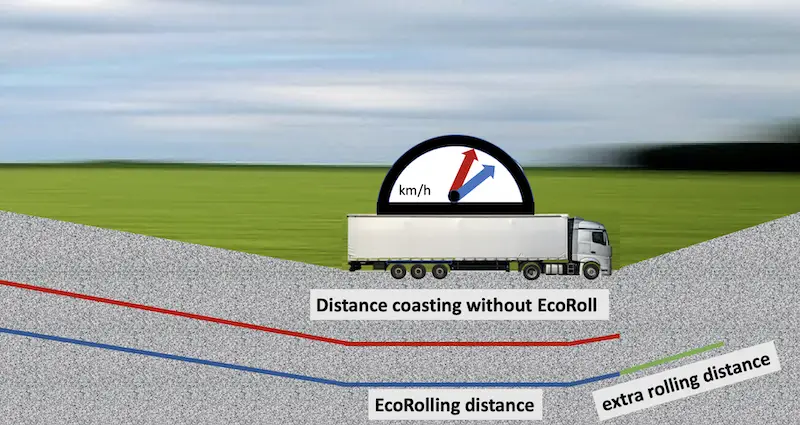
The vehicle rolls down the slope and builds up speed because the downhill force accelerates it.
With EcoRoll, the vehicle reaches a higher speed because the motor does not brake the movement. A higher speed means more kinetic energy that can be used for a longer rolling distance.
So, positional energy is first transformed into kinetic energy (you can also call it momentum) instead of being converted to waste heat. The vehicle speed increases.
At the end of the slope, the positional energy is used up, and therefore the downhill force is not sufficient for further acceleration.
Usually, now comes the next uphill slope and the positional energy needs to be increased again.
From now on, the vehicle slows down because it converts kinetic energy back to positional energy.
Since the vehicle with EcoRoll has more speed than without EcoRoll, it can convert more additional kinetic energy into driving resistance work and thus roll a larger distance before the engine has to take over the propulsion again.
The motor has to take over again when the lower speed tolerance is reached.
For optimal consumption savings, the slope, and length of the incline, as well as the speed reserve, must be such that no braking is required.
With EcoRoll, braking is most harmful.
EcoRoll likes a topography with many gentle hills. They should not be too steep and not too long.
You might say:
“It is not true, that a vehicle without EcoRoll is slower than a vehicle with EcoRoll.”
That’s true if you don’t lower the speed at the crest of the hill as much.
Since the vehicle will not build up so much speed downhill, you don’t need the same speed reserve!
Even so, this is true, you lose fuel efficiency because now the engine drives a longer distance uphill at the beginning.
It’s all a matter of how you look at it, the mechanism is the same.
Driving on steep slopes.
If the gradients are so steep that the maximum downhill speed would be exceeded in any case, EcoRoll must not be activated.
You have to drive into such a situation with the engine being pushed by the wheels and possibly the retarder applied.
In this scenario, you need to apply the brake anyway, so it makes no sense to invest in engine idling consumption.
The use of EcoRoll on steep slopes leads to increased consumption!
Again, an excellent anticipatory cruise control must be able to handle this perfectly.
Driving through the transition from downhill to uphill.
On some vehicles, the cruise controls have a speed peak functionality. The speed can increase by a few km/h above the set maximum speed for a small period of time exactly at the bottom of the decline, where the speed will drop immediately in the next incline.
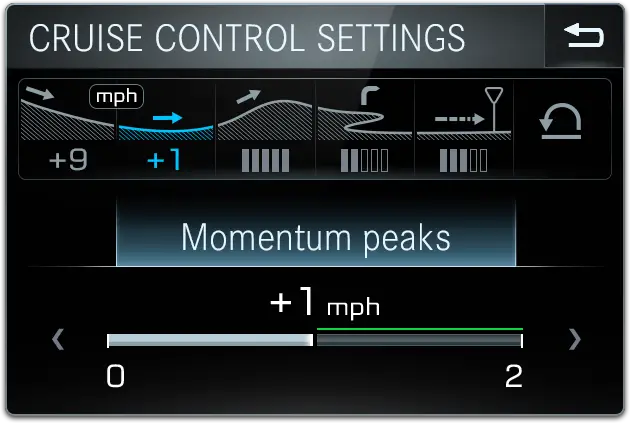
This momentum peak is the icing on the cake for the EcoRoll function. It enables savings to be made in a short time with low idle consumption.
This function is discussed controversially.
In my opinion, it is a smart compromise between safety for road users and saving the environment. In modern vehicles, if they are maintained well, a few km/h for some seconds shouldn’t impose any danger. I would strongly request the legislators provide legal clarity on this matter.
The amount of fuel saving is remarkable, even so, I can not give you a fixed number.
If you are interested in more details, feel free to contact me, and we can talk about it.
If you care about the environment and your wallet, you should think about using this function.
By the way, even if E-Trucks can convert the position energy back to electricity, this comes with conversion losses. For electric vehicles, this function saves electric energy as well, which then can be used for other purposes.
Conclusion
This is the first article in a whole series about fuel-efficient driving. I am curious about your opinion and experience with the EcoRoll mode. So please write your experiences in the comment.
See also the articles about Pulse&Glide and EcoSail. These are extension functions of EcoRoll.
I am very interested in your feedback on this article.
Thanks!
